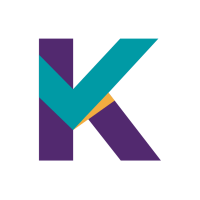3 MDR Lessons Class II Should Learn From Class III Medical Device Businesses
After a one-year postponement, EU MDR is now set to come into force in late May. With the new rules regarding labeling and packaging officially set for 26 May 2021, some manufacturers of the most critical Class III devices are still struggling to ensure full compliance before the cut-off.
Looking further afield to the next wave of MDR requirements, Class II devices – such as catheters, syringes and teeth implants – will have to conform to the same label and packaging regulations as Class III. Manufacturers of these devices would be wise to not postpone preparations for their own 2023 deadline, especially given the various challenges and pitfalls that have been laid bare by the initial compliance push.
Failing to act now is a costly mistake
As a field leader in label and artwork management for highly regulated industries, our team understands that many organizations are still far behind the curve on their compliance journey – both in getting to grips with the significance of the work required and then actually put these changes into effect.
This is not a case of simply shifting internal goalposts – there are major drawbacks to failing to meet these new regulatory deadlines. At the financial level, non-compliant manufacturers will not be allowed to sell their products into the EU market, with some minor exceptions for critical supplies. Non-compliant businesses could also be placed on a watchlist to be inspected and audited, affecting brand confidence and in turn share price.
For those Class II manufacturers caught up in the rush to comply by 2023 and eager to avoid the consequences of non-compliance, there’s three key takeaways businesses should note based on the efforts Class III manufacturers are having to make to meet their May deadline:
1. The scale of the task must not be underestimated
As the pool of devices in Class II broadens – to the extent that Class II is further divided into IIa and IIb devices – so does the scale of the tasks involved for compliance.
Businesses that are yet to begin their compliance process will first need to identify how many labels and artworks exist within the organization. Many business leaders underestimate the quantity of assets, and this task will typically unearth siloed data, labels and artworks that immediately increases the scale of the compliance work.
Manufacturers operating facilities and systems on a global level will find they must also contend with challenges such as asset translations for each device into every applicable target market language. This adds a further level of complexity to label and packaging compliance tasks – the EU alone, for example, has 24 official languages, leading to further translation expense and the risk of ‘doubling up’ translations.
Businesses that grow through mergers and acquisitions will also see the complexity and scale of compliance tasks increase, as product lines and further data siloes are absorbed that require all the above tasks to be worked through from scratch.
2. Relying on manual processes is no longer feasible - automation holds the answer
With the Class III deadline just two months away and many organizations still struggling to get their label and packaging operations over the compliance finish line, it has become apparent that relying on manual work and processes is no longer sufficient. The cost of hiring extra staff – or simply the operational cost of diverting existing capacity and finances – to complete repetitive tasks is slow, prohibitively expensive and outdated.
Automated label and artwork management solutions now offer a modern, future-proof lifeline to help businesses manage all assets from a centralized location hosted in the cloud. Automation eliminates the need to manually search for, identify and edit assets to ensure compliance, with features such as artwork generation saving significant time and eliminating the need to involve costly third-party design agencies. Simply put, automation gets the task right first time, every time – there is little scope for human error to be introduced into the process.
Indeed, the most advanced providers of automated solutions are already exploring ways to streamline remaining bottlenecks such as de-duplication and translation checks by introducing advanced technology to improve efficiency. At Kallik for example, we’re already building strong academic partnerships to explore the application of AI for this purpose.
3. Looking ahead: Future industry and business shifts will pose similar challenges
There will be major medical device regulatory changes in each of the next four years – so medical device manufacturers cannot afford to sit back and wait their turn to comply with each one.
Looking beyond further phasing in of MDR, UKCA marks must be placed on medical devices destined for the UK market from July 2023. Companies that find they barely scraped by to comply with a previous round of regulation will be hard-pressed to repeat the same process for fresh rules.
Pandemic disruption is no excuse to kick the can. The shift to remote operations and cloud-based solutions has been far smoother than expected, with in-house technical experts and external consultants both adapting to remote compliance tasks and in particular software implementation.
Don't delay - get compliant today!
Making the early switch to automated label and artwork management solutions such as Veraciti™ not only lessens the burden of future regulatory compliance, it also delivers long-term business improvements. Significantly cutting outsourced design costs, automated artwork generation and comprehensive audit trails are just some of the benefits provided by a centralized, cloud-based solutions.
But these solutions are no overnight fix – they require buy-in and support from in-house teams throughout the deployment and onboarding stages, spanning several months. This is why it is vital medical device manufacturers act now and begin the process of mapping out compliance roadmaps and planning a technology-led, long-term solution.
Want to know more about how automated label and artwork management solutions can help your business comply with EU MDR and future industry regulations? Get in touch with us at enquiries@kallik.com or +44 1827 318100.
To find out more about how automation can streamline your labeling process to comply with new medical device regulations, you can also download our white paper.






